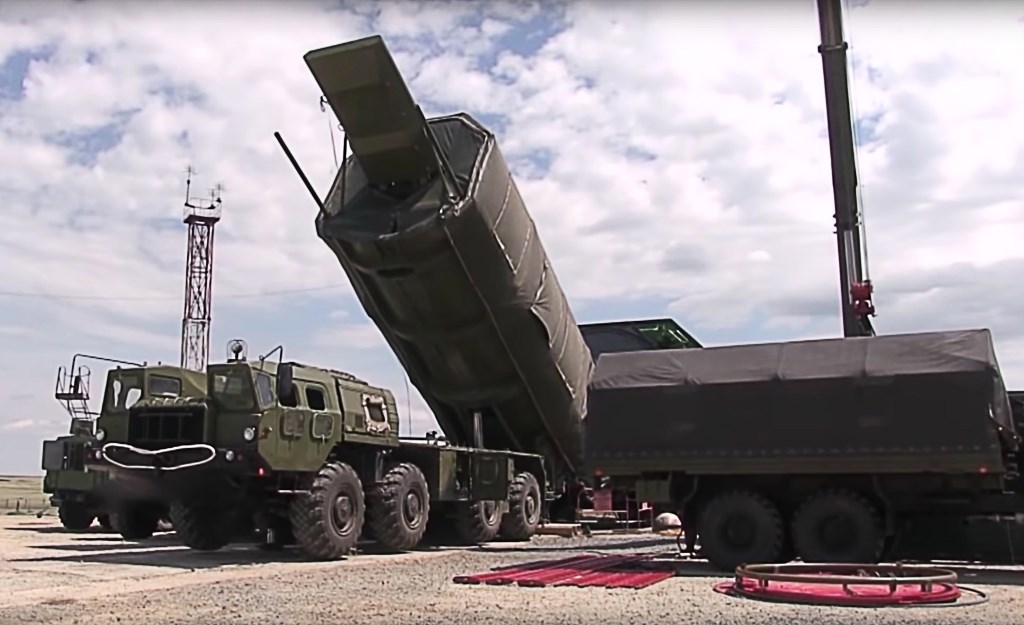Space in the Trump Administration's Security Polic

The military doctrines of China and Russia recognize as crucial the need for the ability to disrupt or destroy satellite systems used to exchange information, communications, or planning and command of armed forces in a possible crisis or conflict with the U.S. and its allies. Despite official declarations by both countries about the peaceful use and non-militarisation of space, they are developing cyber- and electronic-warfare capabilities as well as the technology for directed-energy (DEW) and anti-satellite (ASAT) weapons. They also have significantly increased the abilities of intelligence, surveillance, and reconnaissance (ISR), as well as space situational awareness. This allows them to track, identify, and even destroy objects in orbit.
U.S. Military Potential in Space
Although China’s and Russia’s efforts reduce the U.S. military’s advantage in space, it remains the global leader. The U.S. has a large number of military satellites in orbit around the Earth, used for telecommunications, data exchange, navigation, ISR, ballistic missile detection and warning, and other purposes. At the same time, the U.S. has missiles capable of destroying targets in space, such as the permanent Ground-Based Interceptor (GBI), mobile Terminal High Altitude Area Defense (THAAD), and the naval Aegis and its land variant, Aegis Ashore (both will use the new SM-3 IIA missile). Published in February, the U.S. Missile Defense Review (MDR) assumes the continuation of the current expansion of space capabilities and developing new ones. By implementing the MDR, the number of GBI missiles will be increased while THAAD and the SM-3 will be further developed. In addition, the Department of Defense was obliged by Congress in 2018 to develop a new generation of space interceptors.
So far, no information has been revealed as to whether the U.S. has obtained DEW weapons, but the development of this technology has begun, among others, for the needs of the Missile Defense Agency (MDA). Although the main direction of development of this technology is the destruction of a missile in its early boost phase, it will be possible to use it also for objects placed in orbit. At the same time, the U.S. conducts research on the miniaturisation of satellites, equipping them with self-defence systems and increasing the capabilities to quickly launch them into orbit, a response to the development of ASAT weapons.
Military space operations are conducted by all branches of the U.S. military forces. The dominant one is the Air Force, but the Army, Navy, and Marine Corps all have specialised units. In addition, independent agencies associated with the DoD also operate in space, including the National Reconnaissance Office and the MDA.
Strengthening Capabilities
In response to the threats posed by China and Russia, the U.S. has created new military structures focused solely on monitoring threats in space. These efforts are aimed to increase the efficiency of space operations and improve management and command. The initiated process of reorganising the armed forces did not affect the direction and priorities regarding the development of weapons.
In March 2018, President Donald Trump proposed a new branch of the armed forces focused on space. The first act by Congress was to command the DoD to establish a Space Command (SPACECOM). In addition, acting Defense Secretary Patrick Shanahan established the Space Development Agency (SDA), which is responsible for compiling strategies and developing technology to provide an advantage in future conflicts.
In February, the president signed the Space Policy Directive in which he called for the creation of a “Space Force”. Based on the directive, the DoD prepared a detailed proposal. From that, congressional committees overseeing the armed forces prepared their own projects. The new branch is to be finally formed within a few years (the DoD assumes a 5-year period). After SPACECOM’s formation, it and SDA will become an integral part of the Space Force.
The defence budget proposal for fiscal year 2020 foresees $14.1 billion for space-related activities, which is almost a 20% increase compared to the $11.8 billion allocated for 2019. Areas where spending is expected to increase significantly include missile defence (by $798 million), communications (by $422 million), and navigation (by $369 million). A total of $306 million was planned for the creation of the new structures (Space Force, SPACECOM, SDA). According to the DoD proposal, the additional annual cost after formation, supplementing the current expenditure, is expected to reach about $500 million. The number of Space Force troops and civilian personnel will be about 15,000. The rest of the necessary funds will be transferred from other parts of the budget as needed by the Space Force commander.
NATO and the Allies’ Approach to Space
Give the increasing threats in space, as well as the influence of the actions taken by the U.S., the first NATO space policy was adopted at the June meeting of the North Atlantic Council of defence ministers. The policy’s aim is to coordinate the activities of its members in space, which should lead to increased effectiveness of their operations and cooperation in the protection of space infrastructure. The new Alliance policy may also translate into the further development of NATO’s missile defence system, for which U.S. decisions towards its component of this architecture (primarily Aegis and Aegis Ashore systems) will be crucial. The next step is to recognize space as the fifth domain of operation activities (after land, sea, air, and cyberspace), expected during the December NATO summit in London.
In addition, member states are deciding to increase their activities in space. France plans to establish a space command within its air force. The UK started cooperation with the U.S. as part of the operation Olympic Defender, an international coalition focused on deterring adversaries in space.
Conclusions
The Trump administration’s actions aimed at strengthening military potential in space has bipartisan support in Congress. The development of the Space Force will therefore likely continue, even if the administration changes after the presidential election in 2020.
NATO recognition of space as an operational domain will affect the Alliance and its member states similar to the analogous decision on cyberspace in 2016. The Alliance will have to agree on operational plans, including actions by members in space in a crisis or conflict, create new units within the command structure and an International Secretariat, and develop strategic communication in this field. Undertaking these activities is likely to trigger a debate within the Alliance concerning both its role in dealing with the threat to the U.S. posed by China’s actions and the interpretation of Article 5 in the context of attacks on satellites and other space systems.
NATO’s decisions will also affect members with no space capabilities, such as Poland. For these states, it will be important to strengthen their cyberdefence and electronic warfare skills. In addition, members may be motivated to reorganise or establish national structures that can compete with space supervision and allied cooperation in this field. The U.S. can also push for strengthening space counter-capabilities in bilateral relations. For Poland, the only area of possible cooperation with the U.S. or within NATO in the context of threats in space is probably cyberspace. A bilateral agreement with the U.S. on military cooperation in cyberspace would be the basis for their cooperation.
Future decisions by the U.S. administration regarding the involvement of MDA military operations in space and, in this context, the missile-defence site in Redzikowo, may also be of significance to Poland once the base obtains operational status and there are SM-3 IIA missiles on site.




